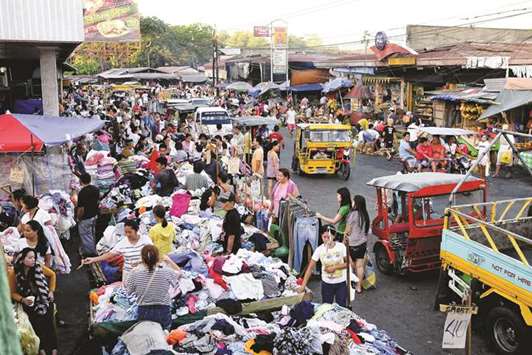The development agency of the Philippine’s southernmost province of Mindanao is eager to use Islamic finance vehicles to fund infrastructure projects in the region where about one fifth of the 25.5mn-population identifies itself as Muslim.
The projects are part of Philippine President Rodrigo Duterte’s massive “Build.Build.Build” programme which has earmarked no less than 8.4tn pesos ($157.4bn) in investments for the entire country over the next five years into airports, railways, bus rapid transits, roads and bridges, as well as seaports.
In a first step, plans are to issue Islamic bonds, or sukuk, to fund large infrastructure projects for the Mindanao island group and also raise funds for the rebuilding of Marawi City, which has been almost completely destroyed last year by five months of armed conflict between government and Islamic State-inspired militants.
According to Romeo Montenegro, director of the Mindanao Development Authority, or MinDA, the Islamic financing initiatives could be made through state-owned Al Amanah Islamic Investment Bank of the Philippines, which would issue sukuk for public, public-private or privately-led projects. Al Amanah, a subsidiary of the state-owned Development Bank of the Philippines, is currently the only bank in the Philippines licensed to do Islamic banking.
To put state-backed Al Amanah into play would be necessary since most conventional banks are shying away to finance projects in Mindanao due to the region’s small market size and prevailing security issues, Montenegro argued. On top of that, few of them are engaged in microfinance, one important banking segment to alleviate poverty in Mindanao.
In order to enable the Islamic financing process, a proposed bill has been pushed in Congress to allow access to sukuk and similar Islamic finance vehicles. However, Montenegro said he has also approached the Philippines central bank and asked them to release policies which would allow for Islamic finance funding without legislation from Congress for the time being.
This could be a shortcut to deploy Shariah-compliant financing instruments and also allow Middle East countries which have expressed interest in investing in Mindanao, among them Qatar, to do so. Neighbouring Malaysia is also one possible investment candidate as the country has interest to improve the economic status of Mindanao and reduce poverty in order to eliminate root causes for Islamist tendencies in the region, which frequently spill over to Malaysia’s easternmost state of Sabah.
In the end, the investments could be huge. Mindanao is in dire need for improvements in transport and power infrastructure after decades of neglect by the central government in Manila. At least four big-ticket projects at a total investment volume of close to 125bn pesos ($2.3bn) are in the planning stage under the “Build, Build, Build” programme. Those are construction and improvement of a 2,750km network of roads and bridges across the province to connect major cities, economic zones and agricultural areas for faster transportation of people, goods and services; a new railway network, Mindanao’s first, to relieve road congestion and reduce transportation costs; an irrigation project for 10,000 hectares of land in 56 conflict-affected areas in an effort to spur farming activities and transform Mindanao into the “rice basket of the Philippines,” as well as improvement of the electricity infrastructure and construction of new power plants in order to put an end to the infamous blackouts that many parts of the province are suffering from, as well as to reduce the power deficit.
On top of that, the recovery and rehabilitation of ruined Marawi City has been made a priority. For this project, investors would co-operate with the Asian Development Bank.

Shoppers browse stalls at a market in Davao, Mindanao. As part of President Duterte’s u201cBuild.Build.Buildu201d programme, plans are to issue Islamic bonds, or sukuk, to fund large infrastructure projects for the Mindanao island group and also raise funds for the rebuilding of Marawi City.
